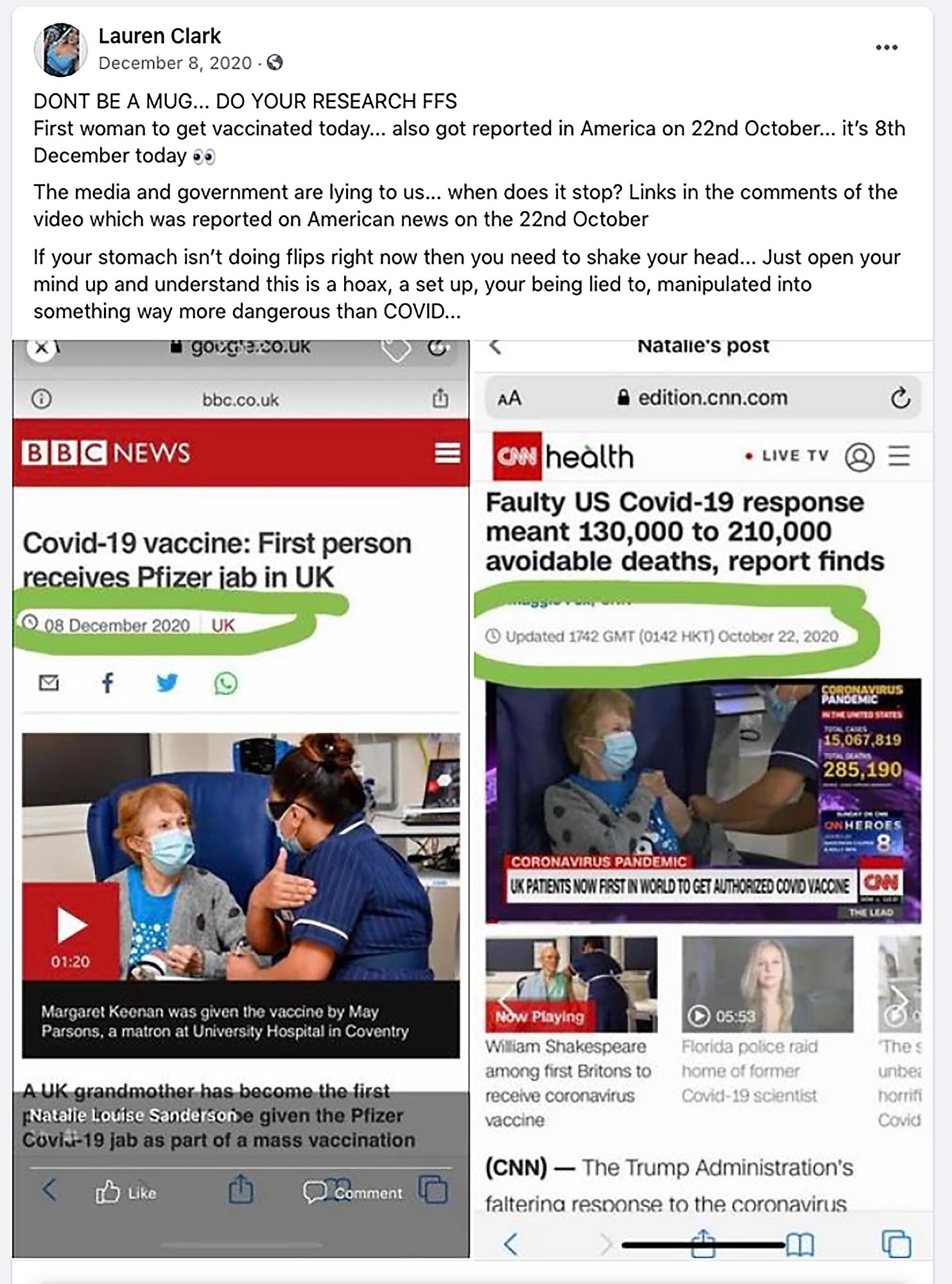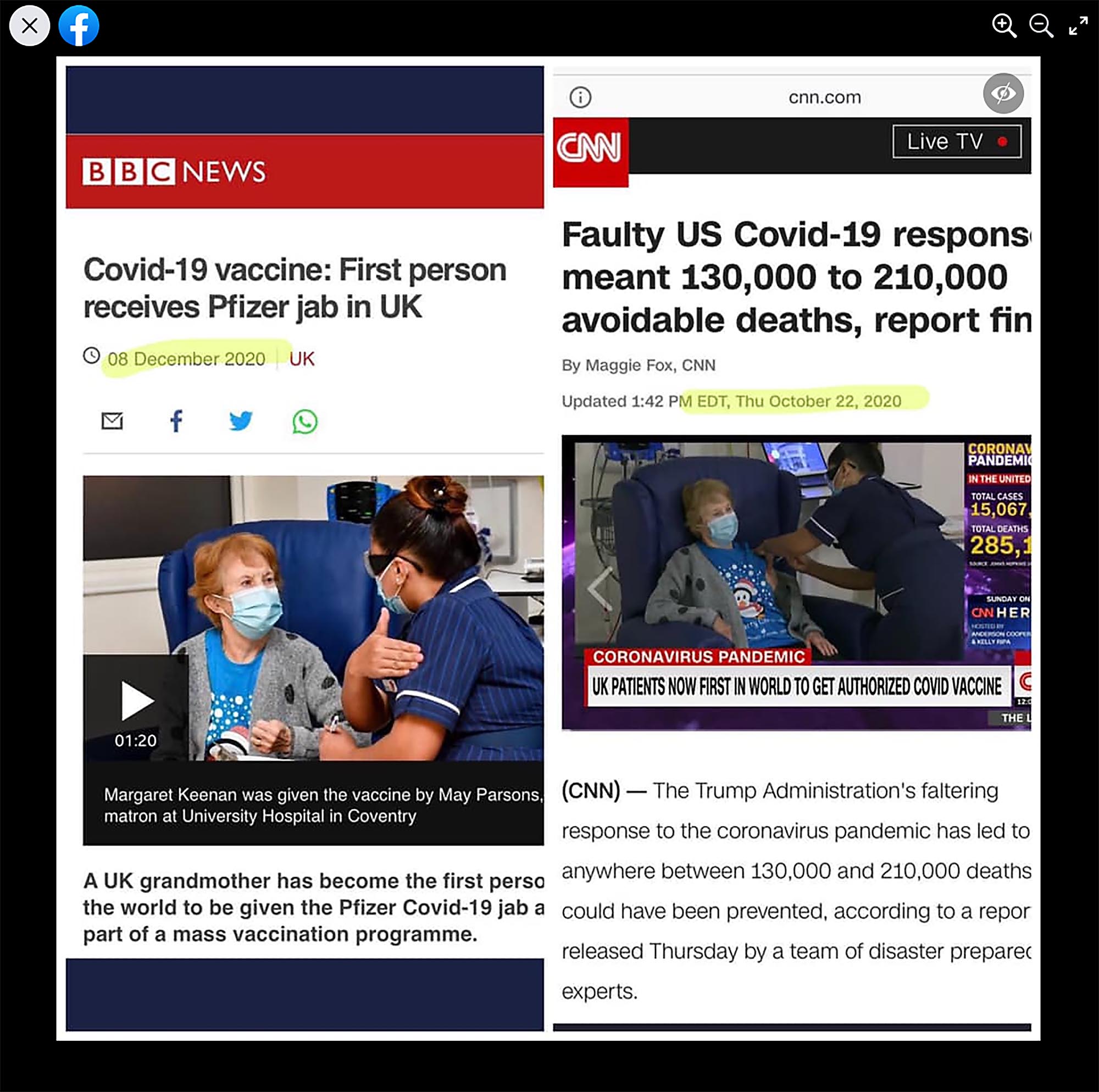Time Travel

Detectives are time-sleuths. They labor to ferret out a set of events, of course, but also, crucially, to establish the order of occurrence. As every viewer of police procedurals knows, the timing of events will expose fiction and establish fact. Because timing and sequence vitally affect meaning, photographs should be subjected to similar inquiry.
The Claim
Ninety-year-old Margaret Keenan is a “crisis actor,” an actress hired to play a fictional vaccination role within a staged “pandemic.” The proof? A photograph with two conflicting dates. Date one: on December 8, 2020, Keenan, a ninety-year-old UK grandmother, is pictured as the first person in the world to be vaccinated against COVID-19. Photographers are on hand to record the historic event, and images are carried widely including by the BBC. Date two: social media is quickly flooded with the BBC’s first-ever” vaccination image side-by-side with a similar CNN photo carrying the date October 22, 2020. The juxtaposition—December 8 versus October 22 is offered as “proof” that Keenan’s vaccination is false, “staged” months earlier. Sample twitter twit: “Which one of these lying stories did you want us to pretend is true.” Doubters use the date discrepancy to question everything from the vaccine to the virus itself.
The Lie
At 06:31 Greenwich Mean Time on December 8, 2020 in University Hospital, Coventry, enveloped in a plush blue chair under the gaze of Professor Stephen Powis, national medical director of the English National Health Service, Margaret Keenan is the first human being vaccinated against the novel coronavirus (outside of tests and trials). Photographs of the event travel worldwide. They are genuine and were made on that date.
Also genuine is the CNN screen capture containing an image of the vaccination with an October 22 date. Here’s how the October date became juxtaposed with the December image. A video player is embedded at the top of CNN’s news page. The player can and will play a wide range of news videos. It is unconnected to the live or archival story being viewed. Thus, one can look back at an archived CNN story from October 22, 2020—in this case about “Faulty US Covid-19 response”—and play a later video (about Margaret Keenan) within the player. Thus, Margaret Keenan (from December 8) will appear near an archived story (carrying the October 22 date).
This is an uncommon type of timeshifting. The vaccination photo is alleged to have appeared before it was actually taken. Far more commonplace is shifting a photograph of a past event forward. The reason is obvious. Past images constitute their own self-assembled archive. They are a photographic cemetery, history’s rearview mirror. From the vast collection of the past, it’s simple to select an appropriate photo, bring it forward, and represent it as current. The present feeds off the corpse of the past.

